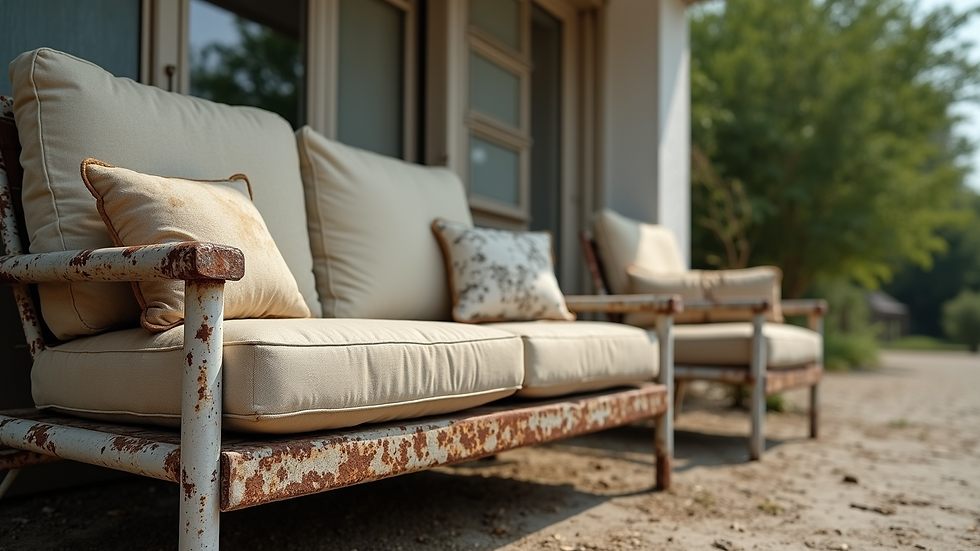Unveiling the Hidden Expenses of Cheap Materials: What You Need to Know
- Samuel B.
- 4 days ago
- 4 min read
In our fast-paced world, it’s all too easy to fall for the appeal of cheap materials. Whether you're renovating your home, taking on a DIY project, or procuring materials for a business, the lure of saving money can influence your choices. However, the real costs of cheap materials often go beyond the initial price tag. This post will uncover the hidden expenses tied to using low-cost materials and illustrate why investing in quality can save you not only money but also frustration in the long run. If you’d like professional guidance on material selection or a contractor to manage the job, see DBG Contracting’s Services or Request a Quote.
The Allure of Cheap Materials
Cheap materials seem to be everywhere—from your local hardware store to online retailers. They promise attractive prices and quick fixes, making them appealing to many. But be cautious. The initial savings can be deceiving.
When you choose cheaper options, hidden costs arise. These can include frequent maintenance, shorter lifespans, and even safety risks. Knowing these factors is vital for making smart purchasing decisions. For professional material recommendations and trusted alternatives, check DBG’s general Services page
Shorter Lifespan and Durability Issues
One of the most significant hidden costs of cheap materials is their limited durability. Low-quality materials often lead to replacements being needed sooner than expected.
Take flooring, for example. Budget-friendly laminate might appear to be a steal, but it wears down quickly, leading to scratches and fading. A study revealed that while cheap laminate could last only 5-10 years, high-quality hardwood or tile can endure 20-30 years or longer with proper care. The long-term savings of opting for durable materials greatly outweigh the initial discount on poorly-made options.
The same holds true for roofing and siding. Although cheap materials may save you money upfront, they often lead to costly repairs and replacements sooner than anticipated. If you need a professional roof assessment or durable roofing options, DBG’s Roofing Services can help evaluate long-term options.

Increased Maintenance Costs
Cheap materials frequently demand more maintenance than quality alternatives. This oversight can lead to expenses that many buyers do not consider at the outset.
For instance, a low-cost roof might require repairs frequently and can need replacement in just a few years. In contrast, metal or slate roofing can last over 50 years with minimal upkeep. A recent report showed that while homeowners initially save $3,000 by choosing low-cost shingles, they could spend over $10,000 in repairs and replacements over the same period.
This increased maintenance extends to appliances, plumbing fixtures, and outdoor furniture. When you account for the time and resources spent on upkeep, the initial savings can vanish quickly. For help choosing materials with better lifecycle costs, consult DBG via their Services or Request a Quote.

Safety Concerns
Safety is another crucial factor when considering cheap materials. Low-cost alternatives might not meet essential safety standards. This can lead to serious hazards in your home.
For example, using subpar electrical wiring can pose fire risks, while inferior building materials may not be structurally sound. Investing in quality materials ensures compliance with safety regulations, keeping you and your family safe.
Environmental Impact
Cheap materials often carry hidden environmental costs. Many of them are produced using unsustainable methods that generate excess waste and pollution.
For instance, low-cost plastics may not be recyclable, contributing to rising plastic waste. In fact, studies indicate that around 79% of plastic waste ends up in landfills or the environment. On the flip side, investing in sustainable materials can lessen your environmental impact and contribute to a healthier planet. If you want greener options, DBG can recommend sustainable alternatives as part of their project consultations — start at Request a Quote.

The Cost of Time
Time is money. When you choose cheaper materials, you often spend more time dealing with repairs and replacements. This is especially troublesome if you're under a tight deadline.
By selecting quality materials from the outset, you can save time in the long run. Fewer repairs mean more time to focus on what truly matters—whether that's finishing a project or simply enjoying your space.
The Psychological Cost
The decision to use cheap materials can also weigh heavily on your mind. When you invest in quality, it often leads to feelings of pride and satisfaction. On the contrary, using low-cost materials can result in regret when they fail to perform as expected.
This emotional toll can impact your overall experience with a project or space. Choosing quality can enrich your enjoyment and peace of mind, knowing you made a wise investment.
The Importance of Research
To avoid the hidden costs tied to cheap materials, thorough research is vital. Invest time in comparing options, reading reviews, and seeking recommendations.
Understanding the long-term impact of your choices will help you make informed decisions that align with your budget and values. Always remember, the lowest price might not always be the best choice. If you’d like a professional material comparison or budget-aware alternatives, DBG’s team can assist — see Services or Request a Quote.
Final Thoughts
While the temptation to opt for cheap materials is strong, the hidden costs can quickly outstrip the initial savings. From direct expenses like shorter lifespans to indirect impacts such as safety and environmental considerations, the total cost of cheap materials can be much higher than anticipated.
By choosing quality materials, you can save money, time, and stress over time. Take the time to research and choose wisely. Quality investments will pay off in the long run, leading to better outcomes and peace of mind. For expert guidance on selecting the right materials for your next project, contact DBG Contracting via their Services or Request a Quote pages.



